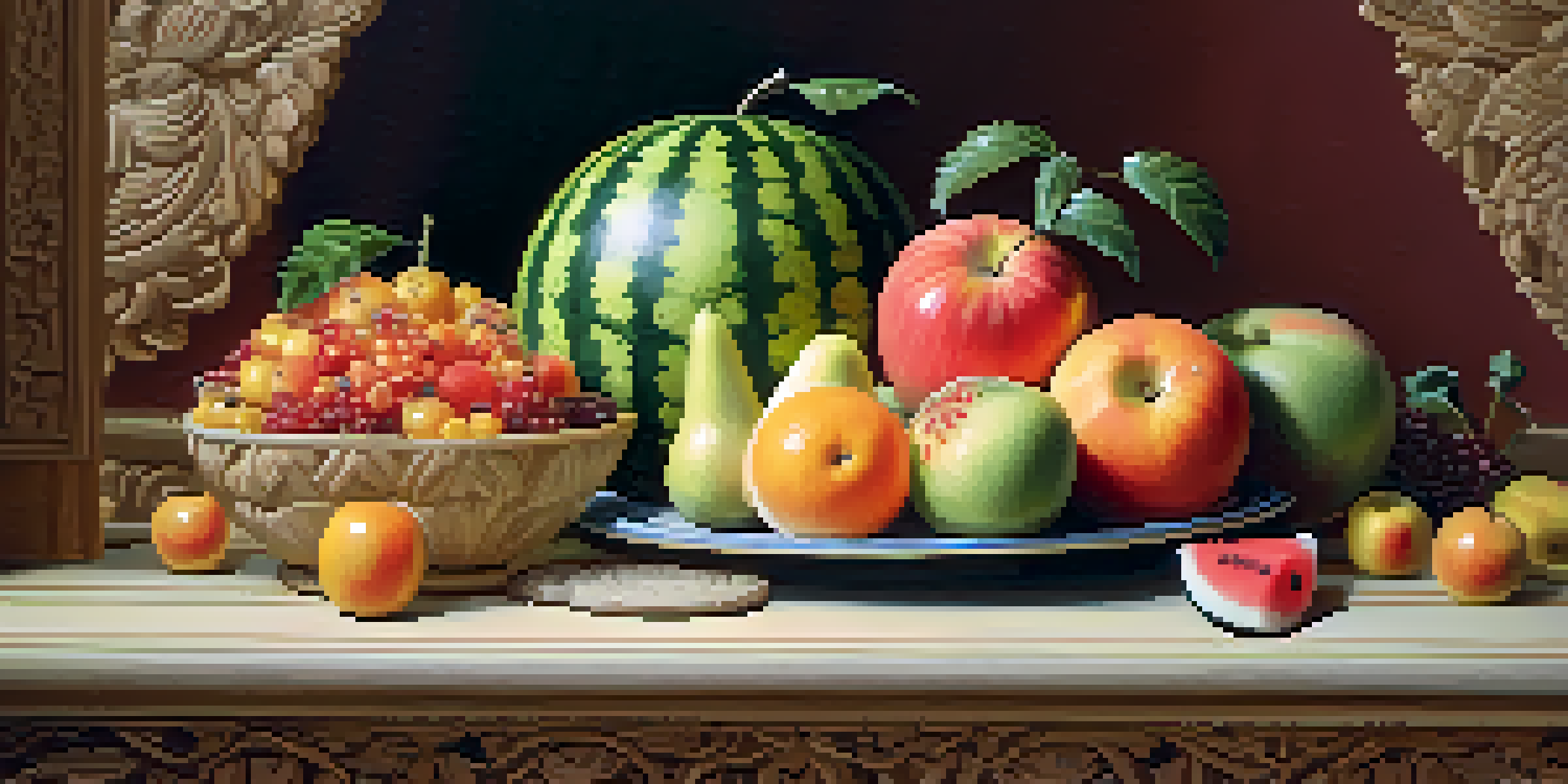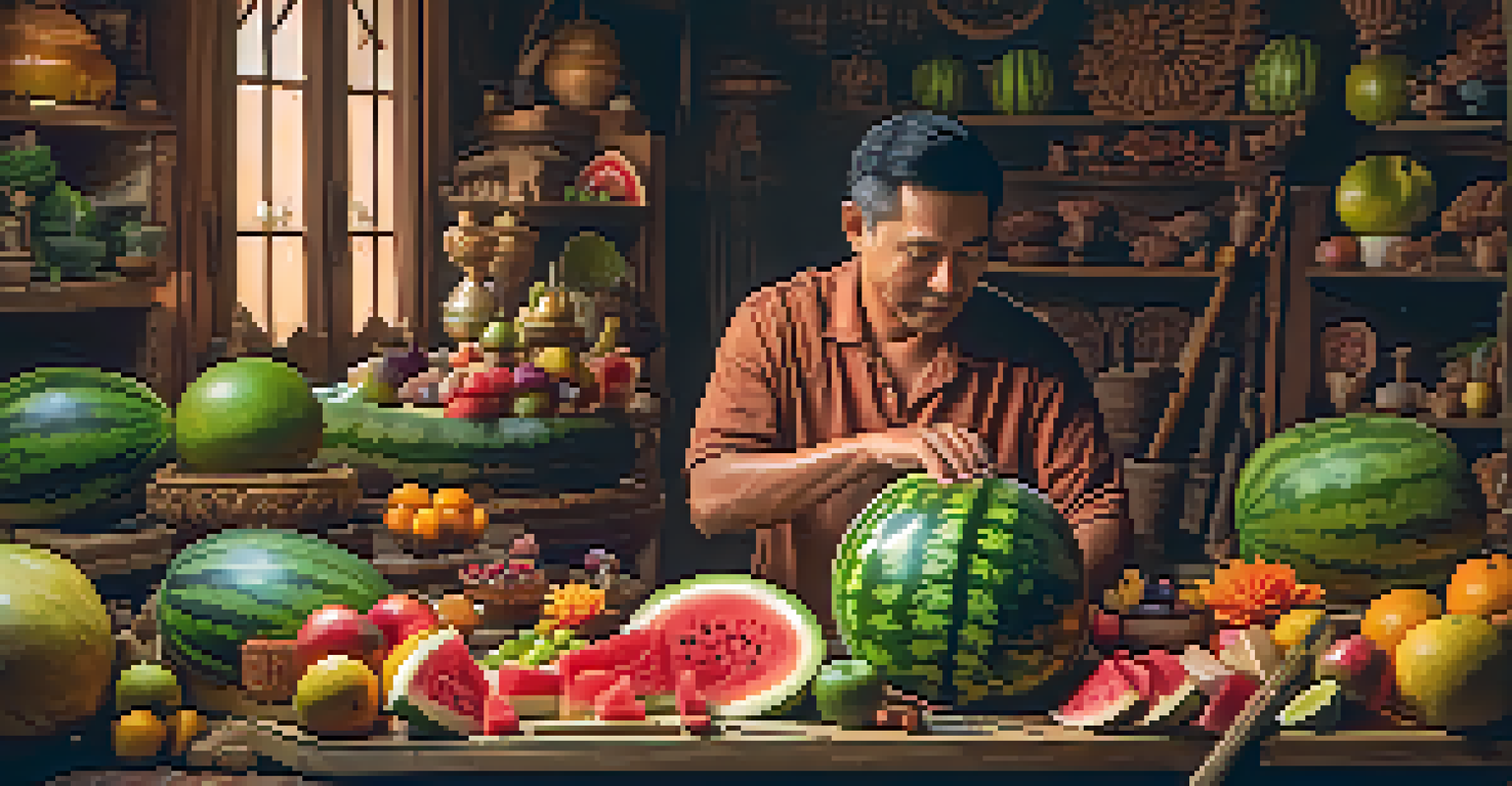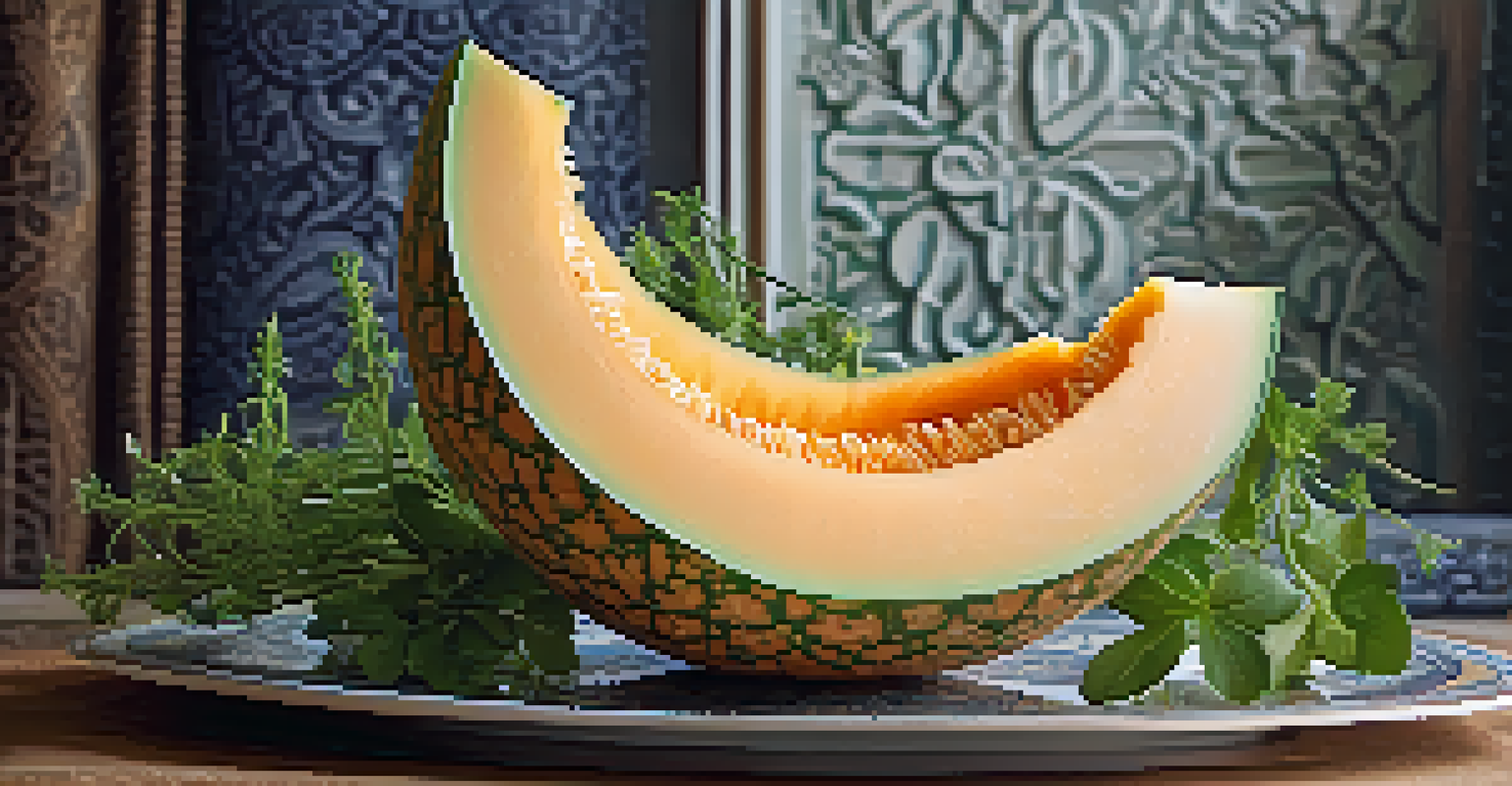Learn the Ancient Craft of Thai Fruit Carving Workshops

What is Thai Fruit Carving and Its Origins?
Thai fruit carving is a stunning art form that transforms ordinary fruits into intricate sculptures. Originating in Thailand, this craft has deep cultural roots and is often showcased at festivals and royal celebrations. The art combines creativity, precision, and a deep appreciation for nature's beauty.
Art is the most beautiful of all lies.
Historically, fruit carving was a way to impress guests and show hospitality at special events. Over time, it evolved into a cherished tradition that reflects the Thai values of respect and generosity. This unique art form not only beautifies dishes but also tells stories through its designs.
Today, Thai fruit carving is taught in workshops around the world, allowing enthusiasts to connect with this ancient craft. Participants learn techniques that have been passed down through generations, making it a meaningful experience that goes beyond just creating beautiful pieces.
Benefits of Joining a Thai Fruit Carving Workshop
Participating in a Thai fruit carving workshop offers numerous benefits, both personally and socially. For starters, it's a fantastic way to unleash your creativity and learn a new skill. The hands-on experience of carving fruit allows you to express yourself artistically while enjoying a fun, interactive environment.

In addition to honing your artistic abilities, these workshops are a great way to meet new people who share similar interests. Working alongside fellow participants fosters a sense of community, making the learning process even more enjoyable. You might find friendships that last well beyond the workshop!
Thai Fruit Carving: A Cultural Art
Thai fruit carving blends artistry with tradition, symbolizing hospitality and respect in Thai culture.
Moreover, engaging in a craft like fruit carving can be incredibly therapeutic. The focus required to carve delicate patterns can help reduce stress and promote mindfulness, allowing you to escape from daily pressures. It's a wonderful way to relax and immerse yourself in the present moment.
What to Expect in a Thai Fruit Carving Workshop
When you sign up for a Thai fruit carving workshop, you can expect a warm and welcoming atmosphere. Most workshops begin with an introduction to the tools and techniques you will use throughout the session. Experienced instructors often share tips and tricks, ensuring that even beginners feel comfortable and confident.
Every artist was first an amateur.
Throughout the workshop, you'll work with a variety of fruits, such as watermelons, cantaloupes, and apples. As you learn to carve, you'll also discover how to select the best fruits for your designs, ensuring they not only look good but taste great too. The process is both educational and enjoyable, making it a memorable experience.
By the end of the session, you'll have created your very own fruit masterpiece to take home. Many workshops also encourage participants to share their creations, fostering a sense of pride and accomplishment. This experience not only enhances your skills but also leaves you with a deeper appreciation for the art of fruit carving.
Essential Tools for Thai Fruit Carving
Thai fruit carving requires a specific set of tools that make the intricate designs possible. Essential tools include a carving knife, a melon baller, and various specialized carving utensils. Each tool serves a unique purpose, allowing you to create different textures and shapes in your fruit sculptures.
While beginners might feel intimidated by the range of tools, workshops often provide everything you need, so you can focus on learning. Instructors will guide you on how to use each tool effectively, ensuring that you gain confidence in your carving abilities. With practice, you'll soon be creating stunning designs with ease.
Benefits of Workshops
Joining a Thai fruit carving workshop fosters creativity, community, and mindfulness in a fun, interactive environment.
Investing in your own set of tools after the workshop can enhance your fruit carving journey. Many enthusiasts find that having their own tools encourages them to practice more frequently and experiment with new designs. Plus, it's a great way to continue exploring this beautiful art form at your own pace.
Cultural Significance of Thai Fruit Carving
Thai fruit carving is not just an artistic endeavor; it carries profound cultural significance. The craft is deeply rooted in Thai traditions, often associated with celebrations, religious ceremonies, and royal events. It symbolizes hospitality, respect, and the appreciation of life’s beauty.
Each carving can tell a story or convey a message, reflecting the values and beliefs of Thai culture. For instance, certain designs may represent good luck, while others honor nature and its bounty. Understanding the underlying meanings adds a rich layer to the experience of learning this craft.
By participating in fruit carving workshops, you not only learn a skill but also engage with a vibrant cultural heritage. This connection to tradition enhances your appreciation for the art form and allows you to carry a piece of Thai culture with you, wherever you go.
Perfect Fruits for Carving: A Beginner's Guide
Choosing the right fruits is crucial for successful carving, especially for beginners. Some of the best fruits for carving include watermelons, cantaloupes, and pumpkins, as their textures and sizes lend themselves well to intricate designs. These fruits are not only easy to carve but also visually appealing when transformed.
As you advance in your skills, you can experiment with a wider variety of fruits, including apples, pineapples, and even vegetables like cucumbers. Each fruit presents unique challenges and opportunities for creativity, which keeps the craft fresh and exciting. Don't hesitate to try new shapes and sizes as you gain confidence.
Choosing the Right Fruits
Selecting fresh, suitable fruits like watermelons and cantaloupes is essential for successful and visually appealing carvings.
Remember that the freshness of the fruit plays a significant role in your carving experience. Selecting ripe, firm fruits ensures that your designs hold together well and have a pleasing appearance. By learning to choose the right fruits, you set yourself up for success in your fruit carving journey.
Where to Find Thai Fruit Carving Workshops
Finding a Thai fruit carving workshop has never been easier, thanks to the rise of culinary tourism and online platforms. Many cities around the world offer workshops, often in local cooking schools or cultural centers. A quick search online can help you discover options that suit your schedule and interests.
In addition to in-person workshops, there are also virtual classes available for those who prefer to learn from home. These online courses often provide comprehensive tutorials and live feedback from experienced instructors. This flexibility allows you to participate regardless of your location or time constraints.

Whether you choose an in-person or virtual workshop, be sure to read reviews and check the credentials of the instructors. A positive learning environment with skilled teachers will enhance your experience and deepen your understanding of this beautiful art form.